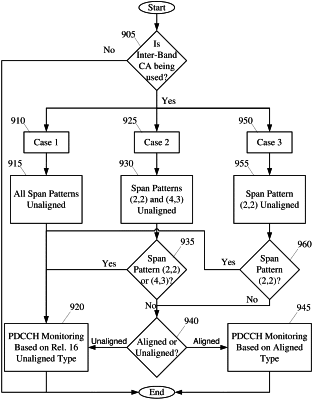| CPC H04W 24/08 (2013.01) [H04W 72/0453 (2013.01); H04W 72/23 (2023.01); H04W 72/51 (2023.01)] | 14 Claims |

|
1. A method, comprising:
at a base station of a network:
receiving, from a user equipment (UE), capability information for a first cell group, the capability information indicating support for a set of multiple physical downlink control channel (PDCCH) monitoring types comprising aligned monitoring limits; and unaligned monitoring limits;
configuring a first component carrier (CC) and a second CC of a carrier aggregation (CA) combination in the first cell group for the UE; and
providing, to the UE, information for the CA combination, wherein the information comprises an indication that the first CC and the second CC are collocated and one PDDCH monitoring type from the set of multiple PDCCH monitoring types that is to be used by the UE for the CA combination.
|